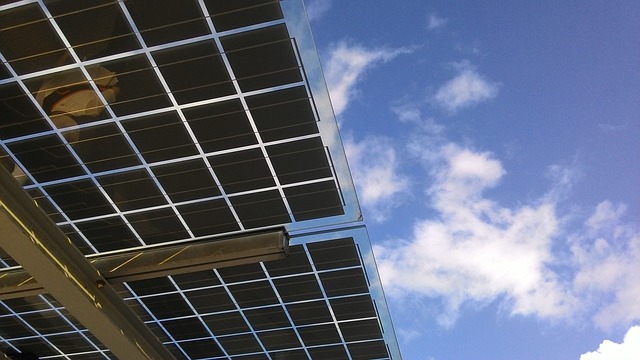By Jennifer A. Dlouhy, Bloomberg
Bernie Sanders wants renewable energy to power U.S. homes and vehicles by 2030 — and he wants to do it by enlisting the federal government in building and running new solar, wind and geothermal electricity projects.
The Vermont senator will unveil those goals in California on Thursday as part of a broad $16.3 trillion plan for combating climate change that tries to capitalize on voter enthusiasm for the issue while casting himself as more ambitious than competitors for the Democratic presidential nomination.
Addressing the climate crisis is a “moral imperative” that requires “a wholesale transformation of our society,” including “massive investments in sustainable energy, energy efficiency and a transformation of our transportation system,” the Sanders campaign said in a document describing the initiative.
Democratic candidates have competed to outline bold and ever-bigger plans for stripping the U.S. economy of the carbon dioxide emissions — including those generated by burning fossil fuels for energy as well as those produced through the making of steel and other industrial activity.
Most proposals envision a transition away from coal and natural gas as electricity sources by mid century, if not earlier. Sanders’ plan is more aggressive in seeking to reach that milestone by no later than 2030 — and promising a complete, economy-wide decarbonization two decades later.
Sanders would harness the resources of the U.S. government itself to generate renewable power that would be “publicly owned.” Under his plan, the Bureau of Reclamation, the Tennessee Valley Authority and the federal power marketing administrations that now focus on hydropower would build wind, solar and geothermal installations, too.
Sanders says that selling electricity from those agencies would help offset the cost of his project — and after 2035 that renewable power would be “virtually free aside from operations and maintenance costs.”
At the same time, he would propel a rapid transformation of the automobile industry away from combustion engines and petroleum-based fuels by providing $2 trillion in grants to trade in conventional cars for new electric vehicles. He promises to spend $85.6 billion to establish a national electric vehicle charging infrastructure network and another $526 billion on an underground electric transmission grid to meet the higher electricity demands.
Sanders would pay for his proposals in part by targeting fossil fuel companies — ending tax incentives for oil, gas and coal extraction while using “litigation, fees and taxes” to make the industry “pay for their pollution.”
The $16.3 trillion price tag — which eclipses what many other Democratic candidates have proposed — would pay for itself in 15 years, according to the Sanders campaign.
The campaign calls his plan a “Green New Deal,” a nod to the sweeping environmental goals and social justice agenda advanced in Congress by Representative Alexandria Ocasio-Cortez, a New York Democrat.
Such vast changes, as put forth by Sanders or Ocasio-Cortez, would require congressional action and face huge obstacles even if the Senate and House were controlled by Democrats after the 2020 election.
President Donald Trump and his Republican allies have denounced Ocasio-Cortez’s climate proposals as a socialist fantasy, and even other Democratic presidential candidates have expressed misgivings about the cost of the Green New Deal, and the risk that it would alienate moderate voters.
Like Ocasio-Cortez’s blueprint, Sanders sees his ambitious programs to combat global warming as the foundation of a more just and equitable society, in keeping with his Democratic Socialist agenda of racial equality, moderately priced housing and Medicare for All.
He also offers something to workers who lose their jobs as a result of his energy transformation. He promises wage guarantees, housing assistance, job training, health care and five years of unemployment insurance benefits for former employees of the fossil fuel industries.
Renewable energy plays a large role in the educational sessions at POWERGEN International. Here’s a taste of what we are offering at the event, which takes place November 19-21 in New Orleans.





